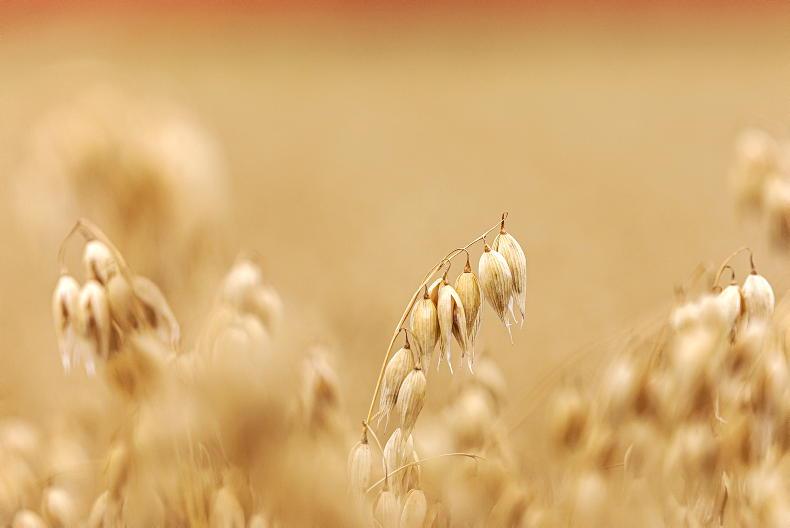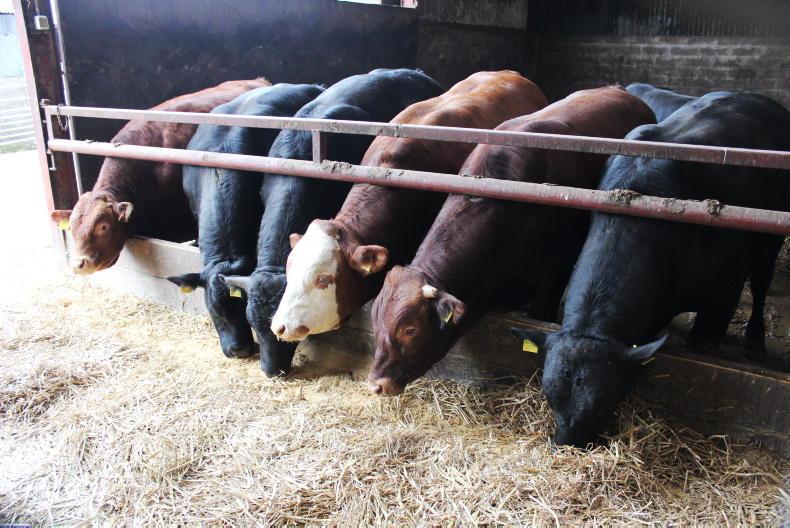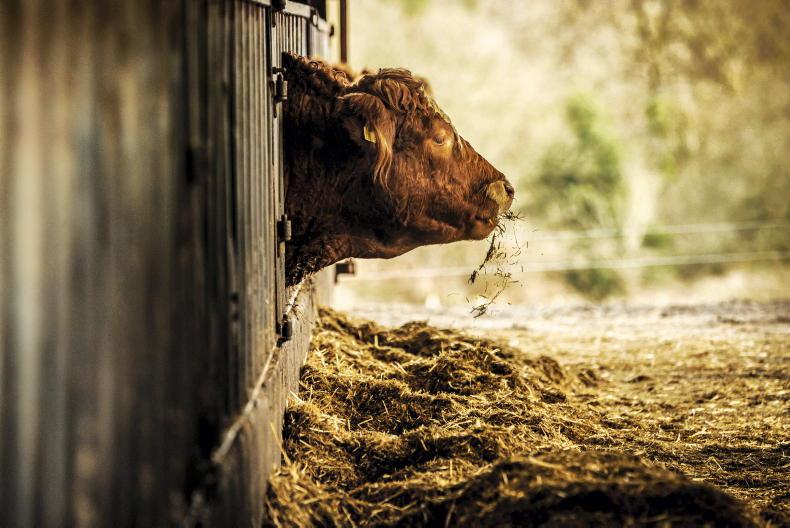While many farmers have shied away from a winter finishing system this year due to the tight margins and high level of risk associated with the system, there will still be a sizeable number of cattle sent to the factory out of the shed in the coming months.
One common query we receive is firstly how much meal should I be feeding during the finishing period?
And secondly, what is the best ration to feed finishing cattle?
Animal type
Feeding high levels of concentrate can be very expensive if the conversion rate of feed to gain is not maximised. The longer an animal is on a high concentrate diet, the poorer the return is going to be. As a rule, heifers should not be fed high levels of concentrate for more than 60 days, bullocks for 60-80 days while bulls can continue to perform over a much longer period – 120 to 150 days.
The breed of animal will also have a huge influence on the level of performance over a period of time with traditional breeds tending to perform well over shorter periods of high meal feeding while continental breeds can perform for longer on the same diet.
Once an animal approaches its mature weight it switches over from laying down lean meat to laying down more fat. This is why traditional breeds tend to do this at an earlier stage.
The downside of this is that it takes three times as much energy to lay down a kilo of fat as it does to lay down a kilo of lean meat.
Therefore, feed conversion efficiency is much poorer when this happens. A further downside to this is that you run the risk of going overfat and getting a price penalty at the point of slaughter.
Finishing phase
For this reason, winter finishing should be split into two distinct periods – a growing phase and a finishing phase.
The growing phase for a typical continental bullock would consist of good quality grass silage (70% DMD or above) fed ad. Libitum plus 3kg of concentrate.
On this diet, stock should be gaining around 0.6kg/day. Once steers are within 80kg to 100kg of their target finishing weight they can then be built up gradually over a number of days to 7kg/day concentrate for the final phase.
Once you are offering stock more than 4kg/day concentrate, it needs to be divided into two feeds morning and evening unless it is being fed as a total mixed ration from a diet feeder.
Cost of gain
With concentrate costs increasing by over 40% compared to last year there has been a lot of emphasis on reducing meal feeding to cattle.
This should only be done where the quality of the silage being fed is sufficient to meet the required daily liveweight gains.
In a finishing system, the cost of the diet each day is not as important as the cost of each kilo gained.
While concentrate is costly, grass silage is also an expensive feed, especially when it is expressed as a cost per kilo liveweight gain.
For example, feeding a 70% DMD silage-only diet to steers the cost of liveweight gain is in the region of €3.85/kg for feed costs alone. In this situation, the animal is only gaining 0.45kg/day or a little over 3kg/week.
Feeding the same quality silage plus 5kg/day of concentrate the cost is €3.15/kg liveweight gain and the animal is gaining 0.85kg/day or 6kg liveweight each week.
De-risking the system
Figures presented by Teagasc earlier in autumn outlined how a beef price of €6/kg is required in spring to leave a €100/head margin for winter finishers. While many will be committed to the system, there are those that feel that these figures are too hot to handle and will have the flexibility to change or alter the approach this winter.
Storing cattle over winter and selling live for grazing is an option for those with lighter stock, further away from the point of slaughter.
Over the last two years grazing cattle have been a great trade in spring and grass buyers in that system have also been well rewarded when they have finished those animals in autumn so morale will be high ringside once again in spring 2023.
As outlined above, however, growing slowly over the winter can be expensive so stock need to be gaining at least 0.6kg/day in this system to make it worthwhile.
Another option is to return stock to grass next year and bring them through to slaughter on your own farm.
Many farmers have reduced stocking rates in recent years so there is likely scope to carry at least some extra numbers on some farms.
Concentrate type
For a finishing system it is all about energy when it comes to selecting the correct ration. Research carried out in Teagasc Grange has shown that once a ration is formulated to the same energy level (UFV) by-and-large there is little difference between ingredients in terms of liveweight gain. Look for simple rations with three or four ingredients.
High-energy cereals such as barley and maize should make up a significant proportion of the overall mix. Ask your feed rep for the UFV of the ration per kilo fed (different from per kilo dry matter). Aim to feed a ration with a UFV of 0.92 or greater.










SHARING OPTIONS